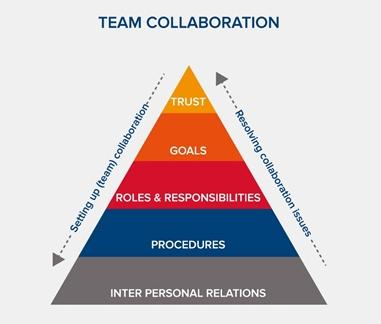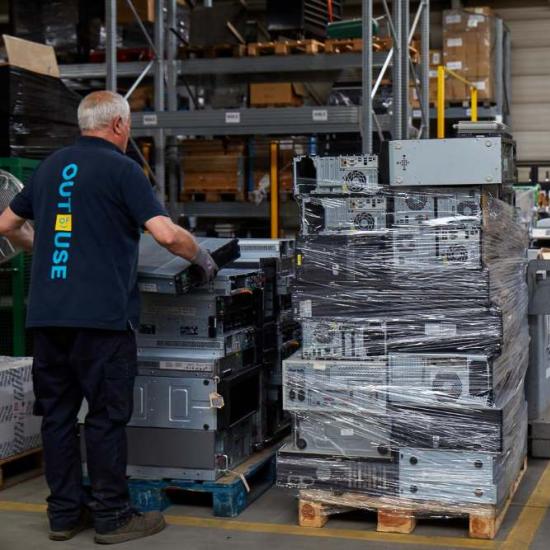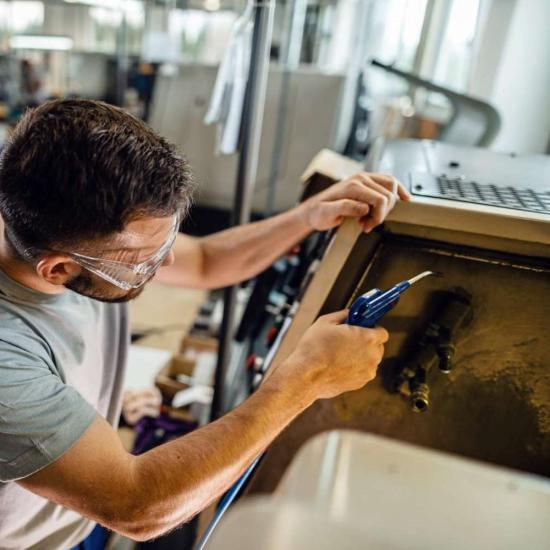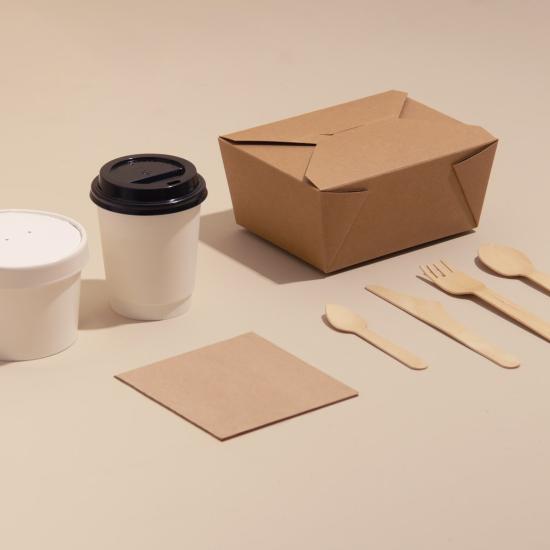Setting up a product as a product-service combination is a common step in making the manufacturing industry more circular. This was the theme of the most recent CE Connect Inspire learning network session. We will now share the most important building blocks and some lessons to be learned with you.
The more we speak of product-service combinations, the more questions arise about how you, as a manufacturing company, could go about it in practice. In this blog, we want to provide the most important building blocks for you to get started. In addition, we also provide you with some lessons to be learned and experience from companies that have already take the first steps.
Keep the eyes on the prize
If you want to evolve from a traditional product-sale to a product-service combination, it makes sense to review your business goal. Companies which successfully develop circular strategies, typically make this exercise at some point, and also explicitly communicate about it.
This step is so prevalent in leading companies because it also strongly influences the relationship with the customer and other stakeholders. This immediately brings us to the first lesson to be learned: the more important service becomes in your business model, the more the customer relationship gains importance.
Services are usually less tangible and visible than the delivery of physical products. Therefore, this service is also less visible in the breadth of the customer organisation. For example, giving a software update to an installed product is not very visible if you do not communicate it to the people who work with your product. In other words, revenue models aimed at service provision require personal and more frequent contacts than is the case with one-off sales of a physical product.
These frequent contacts are the moments when you turn your mission and vision into reality. Matching your mission to the customer's goals is key.
If your sales model does not deliver directly to the end user and you do not have a good idea of who they are and what makes them tick, you are certainly not in the first row to offer them services. In that case, you will either need partners or set up direct contact.
Know what you are intervening in and predict the effects
If you are in direct contact with the end user, there may be some stakeholders that you have bypassed or cut off. Therefore, it is very useful to map out your ecosystem. Map the different players and understand the interdependencies between them. For example, if you have skipped the sales agents because you are now speaking directly to the end customer, ask yourself what value these sales agents can bring. In many cases, they have a broad network, specific knowledge of the local market, the customers and other actors or they can provide specific local services. On the other hand, if there is little or no relevant added value from these sales agents, how can you design your future business model so that they are no longer necessary in building and managing your customer relationship?
The lesson to be learned here is: a new business model always causes some friction somewhere. Know where and find out who adds real value.
In the learning network we presented the Circular Systems canvas to get started.
Case
Will Fill manufactures and markets devices to perform six core tasks on the cooling emulsions of machine tools: measuring, analysing, filling, conditioning, reporting and data logging. These combine a better process with correct (and therefore less) consumption of these emulsions. The devices are designed to be updated remotely (IoT). The data they collect gives rise to regular software improvements (control, analysis, reporting, etc.). These improvements are carried out (at a convenient time for the customer) and thus the devices in the market become more and more efficient and better. In this way, there is no need for representatives and the competition cannot simply copy the product. After all, it is always evolving.
The three most important things: trust, trust and trust
We all know it and yet we continue to underestimate it. Building trust requires continuous attention, time and, above all, a common goal. Many of us are in a 'win-lose' logic, because in the dominant linear system this is very often the reality. The supplier sells, the customer buys, one earns, the other pays, ... The interests are more often not equal than not. We hear from many companies that even in a sales logic, the total cost of ownership (TCO) as a sales argument is already a special challenge to be addressed. For example, the purchaser is assessed on the basis of direct purchase price and not necessarily on the basis of TCO. The benefits of a better TCO only become visible when different departments make their costs and benefits visible together (cost of maintenance, cost of upgrade, impact on production efficiency,...). Thus, several people at the customer's site are already necessary to talk about TCO. Trust can play a decisive role here. Customers with whom you have built up a long-term relationship of trust are generally more likely to go along with the TCO logic.
It becomes even more complex when we want to switch to a product-service combination. Both the offer and the contacts with the different people involved with the customer (purchasing, maintenance, accounting, etc.) are new. The potential benefit for the customer may also be greater. Making this visible requires broad customer support and therefore trust.
Don’t get be discouraged. It is also a huge advantage that such a process sometimes takes time. It ensures that you can also adapt and validate your organisation and your activities, products and services before having to scale up.
The lesson to be learned here is: do not start scaling up if the product-service combination has not yet been validated by users.
Finally, there are two aspects of building such a relationship of trust which you could exploit. First, the setting of a common goal. This allows you, together with the customer, to try to turn the win-lose logic into a win-win logic. The importance of such a common goal should not be underestimated.
A second aspect is openness and transparency. An open discussion with the customer about what your earnings model looks like can work wonders. After all, your customers should know that you are not running a charity organisation, but that you want to be and remain a profitable company, and at the same time contribute to the longer use of the materials in components and products. The latter may be part of the common goal.
The lesson to be learned here is: by sharing, you get something back: trust.
Case
Wouters-Tecnolub designs and markets dosage systems for oils, including for the concrete industry, moulding, etc. The company has changed its raison d'être to embrace the circular economy. Now that it no longer wishes to sell its systems, but to offer them as a service to new and existing customers, it is encountering a number of obstacles. Because the system requires up to 60 per cent less oil to deliver the same performance, oil suppliers are reluctant to see the company come to fruition. Customers are thinking of making a one-off purchase and want to reap the benefits of lower consumption. Wouters-Tecnolub is now increasingly successful in helping to achieve the customer's goals (cost-effective and qualitative preparation of moulds and formwork). Openness about the company's goals and business model helps build this relationship of trust. Meanwhile, the company has also come up with another application for its system that fits within the fight against COVID-19, which it offers exclusively through services. In short, lessons to be learned can also be used in other, new markets.
Do you also want to build a product-service system or do you have questions about how to go about it? Be sure to contact us, so that we can point you in the direction of the most appropriate support: individual (orientation, coaching, etc.), collective (masterclasses, webinars, etc.) or co-creative (learning networks, group coaching, etc.).
(Source picture: Wouters-Tecnolub)
]]>




